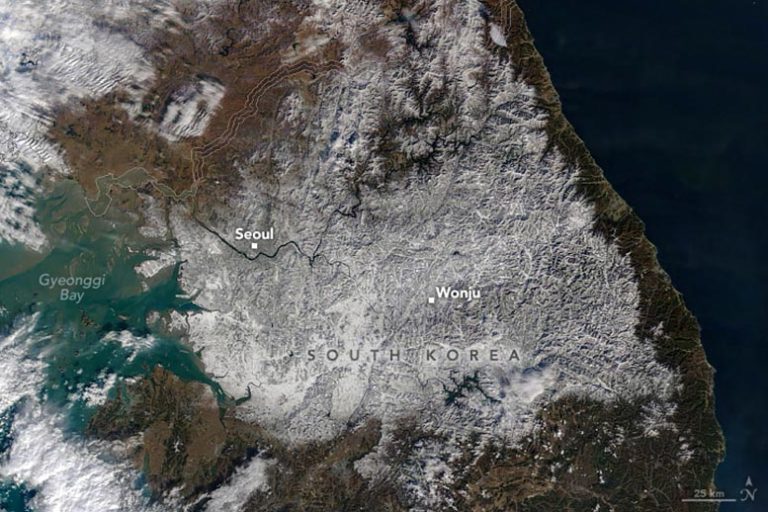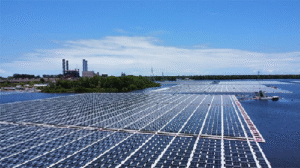Seoul was brought to a virtual standstill this week as a record-shattering snowstorm — now being dubbed “Snowpocalypse” — swept across the South Korean capital, dumping the heaviest snowfall in over a century and paralyzing infrastructure, transportation, and daily life.
According to the Korea Meteorological Administration (KMA), the storm dropped over 57 centimeters (22.4 inches) of snow within 24 hours — the highest single-day snowfall since official records began in 1907. The previous record of 49.1 cm, set in 1937, was obliterated as Arctic winds collided with warm air masses over the Korean Peninsula, triggering intense precipitation and plummeting temperatures.
All flights in and out of Incheon International Airport were canceled or severely delayed.
Subway lines and highways were either halted or congested for hours due to whiteout conditions and frozen tracks.
Schools and offices were closed across Seoul and surrounding provinces, with many switching to emergency online operations.
Over 400 traffic accidents were reported within the city, prompting authorities to deploy military personnel to assist in snow removal.
Seoul Mayor Oh Se-hoon declared a Level 3 snow emergency, urging residents to remain indoors and avoid unnecessary travel. “We are facing a historic weather event, and our top priority is ensuring public safety,” he said in a press briefing.
Meteorologists and climate scientists are calling this event a once-in-a-century anomaly — but one that may become more frequent as global climate patterns shift.
“This is not just a freak storm — it’s part of a larger pattern of increasingly extreme weather events across East Asia,” said Dr. Min-Jae Kim, a climate expert at Seoul National University. “Warmer ocean temperatures are fueling stronger storms with more moisture, and cold air outbreaks are becoming more unpredictable.”
More than 8,000 civil workers and military personnel were deployed across Seoul and Gyeonggi Province to clear snow and assist stranded citizens. Shelters have been opened for those experiencing power outages, and rolling blackouts have been reported in at least three districts due to ice-laden power lines.
The government has pledged swift assistance to impacted residents and businesses, with emergency funds and supplies already mobilized.
As Seoul begins to dig itself out, many are reflecting on the need for greater climate resilience and urban preparedness. This storm, which caught even seasoned forecasters off guard with its intensity, is a stark reminder of how climate extremes are rewriting the rulebooks for cities worldwide.







